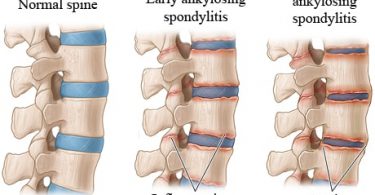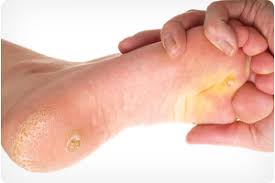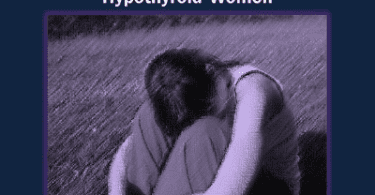Introduction
Hypertension is an important problem in modern society. There is a considerable increase in the number of cases of hypertension particularly of primary (essential) hypertension. Plenty of academic materials on hypertension are available in books and journals of both modern medicine and homeopathy apart from internet sources.
Hypertension has been described as a condition of elevated blood pressure, meaning elevated systemic arterial blood pressure. Various attempts were made to fix a numerical value for a cut-off between normotension and hypertension. Later on, it was understood that rather than fixing a value, hypertention should be defined as being a value of systolic blood pressure above the ‘limit’ appropriate for the age (and gender) of a person. Generally it is taken as systolic blood pressure more than or equal to 140 mm Hg and diastolic blood pressure more than or equal to 90 mm Hg. Now a days, taking antihypertensive medicines is sometimes considered as a criteria for labeling a person as a patient of hypertension.
The value of blood pressure for the purpose of definition and classification has changed from time to time. At present the keyword in the definition is ‘sustained’ elevation. This would mean that the blood pressure values must continue to be above normal to declare a person suffering from hypertension.
Traditional Concept of Labile Hypertension
Traditionally, there was an entity called ‘labile hypertension’; the idea was that the patient was hypertensive at times because the blood pressure had a tendency to rise to abnormally high values from time to time. Included under the causes were two sets of conditions:
- Conditions of anxiety, tension and stress which induced a short period of elevated blood pressure. An overlapping entity was ‘early hypertensive’ in which it was believed that at the start of the hypertensive diseases, the blood pressure would shoot up above the normal limit from time to time (during the periods of stress). Therefore these two sub items were closely interrelated. It was generally expected that in between the periods of stress, the blood pressure would be within the permissible limit.
- Phaeochromocytoma in which large amount of catecholamines (adrenalin / noradrenalin) were released from the tumour of the adrenal medulla. The catecholamines being active bioamines with an action on the vascular system would induce elevated blood pressure (often very high) with associated cardiovascular and non-cardiovascular manifestations. The tendency for release of catecholamines was in spurts from time to time and therefore the clinical manifestations occurred in paroxysms. It was often found that even in between the paroxysms, the blood level of catecholamines was high enough to produce some elevation of the blood pressure. Other patients had blood pressure within normal range in between the paroxysms. But all categories of these patients had fluctuating blood pressure with very high levels occurring from time to time. So this was a classical example of labile hypertension.
Current Concept of Labile Hypertension
In modern times, the term ‘sustained’ has become a compulsory part of the criteria of hypertension. This means that the group of stress / tension / anxiety induced bouts of elevation of blood pressure but normal blood pressure at other times – the group of early hypertensives with hypertension at times and not at other times gets excluded from hypertension. Among the cases of phaeochromocytoma (group (ii) above), the patients who do not have an elevated blood pressure in between the paroxysms would also get excluded. Only those cases, who have blood pressure above the permissible upper limit even in between the paroxysms, would qualify as hypertensives. The fluctuation over a wide range of values would make them true cases of labile hypertension.
Labile Hypertension in Homeopathy
In homeopathic literature, the term ‘labile’ is still used in a broad sense. It is mentioned that the term ‘labile’ can be applied to an initial phase in the development of hypertension. Explanation is given in terms of hyperactivity of the vasculature and/or a hyperactive sympathetic nervous system. Hyperactivity is usually designated as a classical psoric manifestation. Basically, the persons of psoric background suffer from labile hypertension which is often caused by anxiety, grief, apprehension, irritability etc. If these emotional factors gradually pass away, the blood pressure often comes at a normal level. These patients produce many symptoms often complaining of palpitation, chest discomfort, breathlessness, vertigo etc. The symptoms are usually relieved during absolute rest. Peculiar stitching type of chest pain, a sensation of surging of blood to the head and chest, an empty feeling or heaviness of the chest and weakness are common complaints. Apprehension and anxiety are often associated with cardiac discomfort. It is also evident that the majority of the symptoms are modified by emotional disturbances.
Phaeochromocytoma – The Disease Entity
Phaeochromocytoma is a tumour of sympathochromaffin cells which are normally responsible for the production of catecholamines in the body. The maximum collection of these cells is in the adrenal medulla and hence the tumour is most common in the adrenal medulla. 80% of the cases involve unilateral adrenal medulla, 10% have bilateral adrenal involvement and the remaining 10% are extra-adrenal in origin (including sites inside the organs like pancreas, bladder). There are reports of cases running in the family as a part of ‘Multiple Endocrine Neoplasia’ (MEN) syndromes (particularly MEN IIB where there may be phaeochromocytoma along with medullary carcinoma of thyroid and mucocutaneous ganglioneuroma). In case of children, the adrenal tumours are bilateral in more than 20% of the cases and are found in both the adrenal and extra-adrenal areas or only in the extra-adrenal areas in about 30 – 40% of children.
Clinically, the paroxysm produces an episode of severe hypertension. There is palpitation, tachycardia, sweating and apprehension. Patients may have either flushing or pallor depending on the balance between vasodilatory and vasoconstrictive bio-amines released by the tumour. Gastrointestinal manifestations such as nausea and vomiting may occur. Metabolic effects of catecholamines produce hyperglycaemia. Rarer manifestations include mental torpor, tremor, unconsciousness etc.
Diagnosis is usually clinical and the differential diagnosis includes hypoglycaemia and panic attacks. The latter (panic attack) is often a difficult differential diagnosis because the paroxysm of phaeochromocytoma can have a prominent degree of apprehension.
Investigations include an estimation of catecholamines in plasma and urine. Practically speaking, the estimation of vanillylmandelic acid (VMA) in urine is the most helpful. VMA is a breakdown product from catecholamines and an amount exceeding 7.0 mg in 24 hours urine indicates phaeochromocytoma. Imaging (USG / CT) is also required to identify the site of the tumour which could be extra-adrenal too. In sophisticated laboratories, High Performance Liquid Chromatography with Electro Chemical Detection (HPLC-ECD) may be available for testing catecholamines and their breakdown products. Conversely, the old test which depends on the fact that ‘Phentolamine injection during the attack produces a sudden fall of blood pressure’ is no longer used.
Modern medicine management involves the use of both alpha and beta adrenergic blockers to be followed by the surgical removal of the tumour. There is obviously a scope for homeopathic management for the cases of phaeochromocytoma. This is particularly true for the patients who do not undergo surgical removal of the tumour and the relief of symptoms can be considered a great achievement.
Homeopathic Approach to Phaeochromocytoma
Several medicines have been found in the Homeopathic Materia Medica as well as in the Repertory, where the description of symptomatology fits with the clinical picture of phaeochromocytoma:
- Violent palpitations, chest discomfort, vertigo, terrible nausea and vomiting, pallor and cold sweat with apprehension of death can be the classical indications of the medicine ‘Tabacum’ for phaeochromocytoma. (Allen HC, Boericke W)
- Nervous hypertension with fluctuating blood pressure is one of the characteristics of the drug ‘Ignatia’. (Clarke JH)
- Superficial arterial hyperemia along with flushed face with surging of blood to head and face and sweating is indicative of ‘Amyl nitrosum’. (Boericke W)
- Hypertension along with full, hard, bounding pulse with congestive symptoms, palpitation as well as nausea and vomiting often indicate ‘Veratrum viride’. (Boericke W, Clarke JH).
- Hypertension with sanguinous congestion in the brain, red face and a fear of apoplexy often indicates ‘Asterias rubens’. (Allen HC)
- Flushing of the face as well as throbbing of arteries, particularly carotids, rapid bounding pulse and a classical throbbing headache indicates ‘Belladonna’ as well as a rare medicine ‘Adrenalin’. (Boericke W)
- In Boenninghausen’s Characteristics and Repertory, the medicines mentioned in the first grade for the rubric ‘Ebullitions, surging or rushes of blood, flushings, orgasms etc. in the chapter ‘Circulations’ are Amy nit., Aur., Bell., Bov., Caust., Fer., Hep., Iod., Kre., Lyc., Merc., Mos., Phos., Phos-ac., Samb., Sang., Sars., Seng., Sp., Spong.. The symptoms are one of the important manifestations of phaeochromocytoma.
Conclusion
The entity of labile hypertension used either in the narrow sense for ‘selected cases of phaeochromocytoma’ or in the broad sense of ‘both phaeochromocytoma and early hypertensives with stress-induced bouts of hypertension’, all are expected to show good response to homeopathic management through properly selected remedies. Labile Hypertension should therefore, receive adequate attention in homeopathic academic circles and homeopathic clinical practice.
References
- Allen H. C.; Keynotes and Characteristics with Comparisons of Some of the Leading Remedies of the Materia Medica added with other Leading Remedies & Nosodes. Reprint Ed. New Delhi: Indian Books & Periodicals Publishers; 2003.
- Allen J. H.: The Chronic Miasms, Psora & Pseudo-psora. Reprint Ed. New Delhi: Indian Books & Periodicals Publishers; 2002.
- Boericke W, Boericke O. Pocket Manual of Homoeopathic Materia Medica. Reprint Ed. Calcutta: Medical Book Suppliers; 1997.
- Boger C M. Boenninghausen’s characteristics and Repertory. Reprint Ed. New Delhi: B. Jain Publishers; 2002.
- Clarke J. H. A Dictionary of Practical Materia Medica. vol. I, II, III. Reprint Ed. New Delhi: B Jain Publishers; 2006.
- Clarke J. H. The Prescriber. Reprint Ed. New Delhi: B Jain Publishers; 1998.
- Kasper DL et. al. (ed). Harrison’s Principles of Internal Medicine. vol. II. 16th Ed. New Delhi: Mc Graw Hill; 2005.
- Kliegman et. al. (Edn). Nelson Textbook of Pediatrics. 18th ed. Philadelphia: Saunders Elsevier; 2007.
- Muzumdar K P. Lectures on Homoeopathic Therapeutics. 1st Ed. Bombay: Paramanand Prakashan; 1995.
- Roberts H A.: The Principles and Art of Cure by Homeopathy. Reprint Ed. New Delhi: B. Jain Publishers; 2002.
About the Authors
Dr Arup Das is 2nd year PGT, Department of Practice of Medicine at National Institute of Homoeopathy under West Bengal University of Health Sciences.
Dr Subhash Chaudhary, MD (Hom) is a Lecturer in the Department of Practice of Medicine, National Institute of Homoeopathy, Kolkata.
Dr D Basu, MBBS, PhD (Med.) is a Professor and Head of the Department of Practice of Medicine, National Institute of Homoeopathy, Kolkata.





